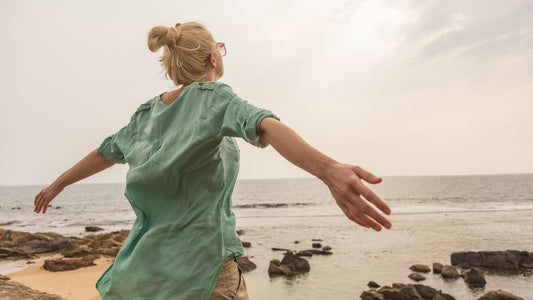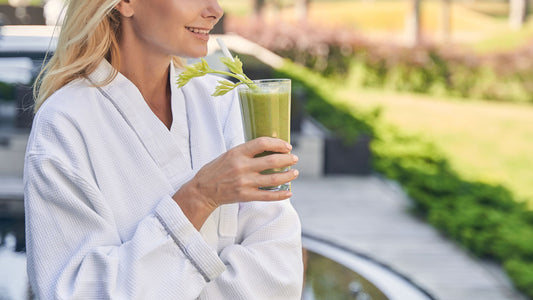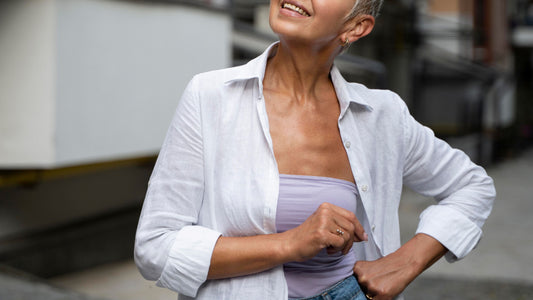As I discussed in an earlier blog on estrogen, our reproductive hormones naturally decline over the course of a women’s life (and men’s hormones decline too, of course!).
And along with the hot flashes, mood changes, skin changes and other menopause-related symptoms, natural downward shifts in estrogen cause a lot of our issues “down there”.
As we age, along with sometimes painful and embarrassing vaginal issues, such as discharge and dryness, many of us will suffer at some point from incontinence.
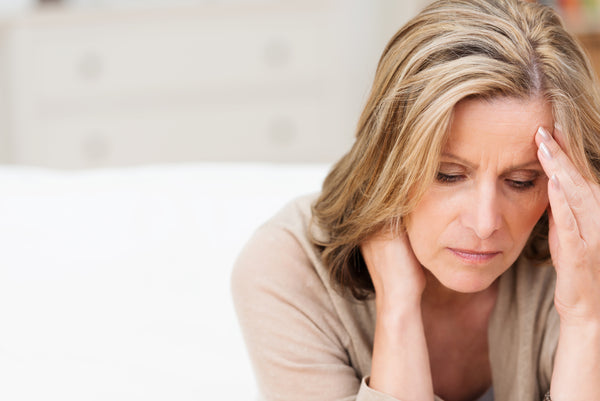
Honestly, I have delivered 4 babies and this is true for us in the postpartum period as well. YUCK…even the word "incontinence" sounds like it is something you don’t want to experience…
Yet many women - and men - do. And many needlessly do, which I will get to in just a bit.
Although estimates vary, the Mayo Clinic has estimated that,
Nearly 20 million people in the US suffer from urinary incontinence. They also estimate 85% of these are women.
Incontinence – What Is It?
Incontinence is the involuntary loss of one’s bladder control.
There are a couple of different types of incontinence, with the most common being “stress incontinence”.
- Stress incontinence (Stress Urinary Incontinence or SUI): This is the little bit of urine you might lose when you laugh, cough or sneeze; or you might leak a bit when you are squatting or lifting something heavy. Anything that puts pressure on your abdomen can cause stress incontinence. A lot of women will experience this when they do their favorite sport or workout.
- Urge incontinence (Overactive Bladder or OAB): Urge incontinence is often referred to as “overactive” bladder, and it may mean you are constantly in need of the nearest bathroom. The need for you to urinate may come on very quickly and unexpectedly.
- Nocturia: This is the need to get up in the middle of the night with an urge to pee, even if you might not be able to pee once you get to the toilet!
- Painful urination: a burning sensation when urinating; this is likely to be a urinary tract infection but may cause difficulties relating to leakage. This can also be from dry or irritated skin around the urethra.
Women may suffer from one or all of these. It's a real problem when it keeps you from doing the things you love to do or getting the rest you need.
Incontinence – What causes It?
Incontinence occurs primarily due to two things:
- Natural hormonal changes that occur as we age and…
- Second, our lifestyle decisions – and overall health – can impact whether we will experience incontinence early…. late…. or not at all in our life.
So first, hormone decline as we age results in:
- The vaginal tissue becomes less elastic
- Muscles start to deteriorate and weaken; in particular, the pelvic floor muscles that support your bladder and urethral tube (the tube that empties urine out of your bladder)
- The lining of your urethra begins to thin
Second, our lifestyle decisions and overall health can impact whether we experience incontinence:
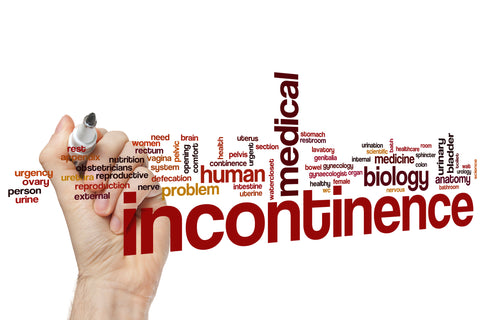
- Obesity (and in particular, an unhealthy BMI) can increase the risk for developing incontinence issues as it increases intra-abdominal pressure.
- Childbirth: experts disagree how much this directly impacts the development of incontinence (Based on my clinical practice I’d say pregnancy and childbirth do create wear and tear on things, especially after multiple childbirths but vaginal births are worth it for many reasons relating to your and your babies health!).
- Surgery: Additionally hysterectomies or other pelvic surgeries can cause greater risk due to nerve damage.
- Chronic bladder infections or other abnormal urinary tract issues, including recurrent urinary tract infections.
- Certain medications can cause incontinence symptoms (by relaxing bladder).
- Certain drinks can worsen incontinence, such as caffeine, carbonated drinks and alcohol. Spicy foods, too. These act as stimulants or irritants to the bladder.
- Chronic health conditions such as diabetes can cause nerve damage, resulting in incontinence.
- Smokers with a persistent cough can actually create a chronic abdominal pressure that can cause incontinence.
As you can see, at least some of these are the result of decisions YOU make! Some worth it, others not so much.
Can You Prevent (Or Improve) Incontinence?
Just like with the other muscles in your body, there are ways to decrease or even halt many incontinence issues through exercise, nutrition, lifestyle and maintaining a healthy weight. There is a natural hormone solution that is also available that further strengthens the supporting musculature.
Here are the things you CAN DO NOW.

-
Maintain a healthy weight: I’m not going to focus on diet and weight here in this blog but read about the benefits of a Keto-Green® diet in an earlier blog. If you get on a good Keto-Green program you can maintain the healthiest weight for you.
- Pelvic floor exercises: YES there is specific exercise that will help with incontinence (but many women do them incorrectly!)! Did you see my previous blog (and video) on how to do Kegel exercises correctly? This is a great exercise for strengthening your pelvic floor muscles (you can learn what those are in the video!), which will help prevent or improve incontinence issues. Kegel exercises strengthen the pubococcygeus muscle and can improve symptoms of incontinence (as well as arousal and orgasm!). They can also prevent or improve symptoms of pelvic organ prolapse, in which the uterus or bladder bulge into the vagina due predominantly to muscle weakness. I also like to have women use jade balls, lelo balls and Kegel balls to strengthen their vaginal muscles.
- Locally applied DHEA: My new Julva restorative cream for the vulva Julva restorative cream for the vulva (do you know what the vulva is?) contains DHEA which research has shown improves the musculature of all three layers – the deeper layers – of the vagina. This increases the density of collagen fibers in the vaginal wall and stimulates the muscle layer. (Want to hear the story of why I created Julva?) More than just DHEA, Julva contains restorative ingredients and plant stem cells to help repair the delicate tissue and mucous membranes around the urethra, vagina and rectum.
What Should I Do If I Have Noticed Leaking?
Keep a “bladder journal”: I suggest that if you are experiencing leakage that you start to keep a bladder journal. When are you having the problem? Is your issue at night? Do you experience it while you are doing certain things like exercising? Have you just had something, in particular, to eat or drink? (Eliminating diuretic beverages such as coffee and tea, as well as bladder irritants such as citrus juice, might be of help). Do you feel like you absolutely have to pee, but then you don’t once you have the chance? All of this info will be handy for you to discuss with your doctor.
Pelvic floor exercises! If you aren’t doing pelvic floor exercises, please start. 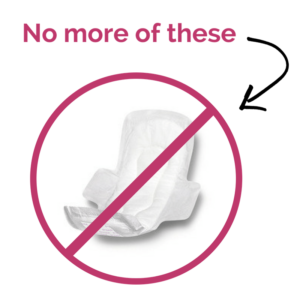 And talk with your doctor about these exercises as well as diet/lifestyle changes you might want to make.
And talk with your doctor about these exercises as well as diet/lifestyle changes you might want to make.
In cases of urge incontinence your doctor may also want you to do some “bladder training”.
Bladder training: Your doctor may suggest you attempt to work at “re-training” your bladder to address issues with urge incontinence. Holding the urine for a few minutes after you feel the urge and then slowly increasing that interval of a period of time may be of help.
Julva restorative cream with DHEA: Julva is a non-prescription cream containing natural DHEA, plant stem cells, and oils… it helps improve the vagina muscles but guess what else it does? It improves dryness and irritation around the vulva area, reduces pain during intercourse… and improves your arousal and libido! (research proves it!)
But what about surgery and estrogen replacement?
So if you’ve been dealing with incontinence you may have tried (or be thinking of trying) either estrogen therapy, surgery or other treatment options. I’ll discuss each briefly.
As a long time physician I have always lived by the adage that doctors should have their patients use natural healing methods prior to invasive measures. I have so many stories of patients who came to me thinking they needed surgery for organ prolapse or incontinence, only to find that once I put them on natural hormones for a few weeks (to ensure their vaginal tissue was optimal for surgery)… that they no longer needed the surgery! I always say.
Do the natural stuff first!
Do your homework and discuss your options with your doctor. But try the natural (and easiest… definitely easier than surgery!) stuff first! Pelvic floor exercises done correctly can make a big difference.… and try my Julva feminine cream.
Other Options That Women Have Historically Considered Include:
Estrogen Therapies:
Hormone replacement therapy (oral doses of estrogen) – While oral estrogen therapy can be helpful for hot flashes as the major issue, it really hasn’t been found to significantly resolve vaginal atrophy issues or incontinence. It also isn’t recommended for women having had breast cancer. Some 40% of women receiving oral estrogen therapy continue to have their persistent vaginal symptoms (dryness, pain, irritation, etc.). Some studies have also found oral estrogen therapy has been associated with worsening urinary incontinence.
Estrogen or vaginal tablets – local estrogen has also not been found to improve incontinence as it works on the top mucosal layer of the vaginal tissue and does not help the deeper musculature.
Surgical Options:
-
Labiaplasty and vaginoplasty – these surgeries are viewed as primarily “cosmetic” and are not endorsed by the American Congress of Obstetricians and Gynecologists. They do not offer any relief relating to incontinence.
- Pelvic support and incontinence surgeries
- MonaLisa Touch laser therapy: While this vaginal laser treatment has been approved by the U.S. Food and Drug Administration (FDA) for gynecologic use it was specifically approved only for vaginal tissue regeneration (dryness, irritation). It was not approved for treating urinary incontinence.
- Uterosacral ligament suspension and sacrospinous ligament fixation – addresses prolapse and incontinence concerns but does not address other vaginal atrophy symptoms (dryness, irritation, pain during intercourse, lack of libido).
- Collagen or body fat injections around the urethral tube to help it function properly.
- A pessary: a ring-shaped device that is inserted into your vagina which presses against your urethra, helping to avoid leaking.
- Sling or bladder suspension procedures should be considered when symptoms persist after the above trial of Julva, vaginal androgen hormone therapy, properly done Kegel exercises and vaginal health optimization.
Prescription medications
There are a number out there especially for urge incontinence, but I prefer to find a more natural approach with no side effects.
Incontinence products:
So many products! I don’t mind a panty-liner… but inserts, shields and diapers! NO… Who wants to live with that. DO THE NATURAL STUFF FIRST and you may not need all of these new products, which now include:
- Inserts that fit around the urethra to prevent leakage (Fem-Assist, CapSure Shield, FemSoft)
- Incontinence devices (Introl’s Bladder Neck Support, Incontinence Ring)
- Period-specific products (tampons, pads, panty-liners)...it is estimated that 70% of women use period-specific products for incontinence purposes...both product areas are booming!
- Incontinence pad products, panties, and diapers. NO!
I encourage you to speak to your doctor if you are experiencing incontinence or other sexual health issues... but remember there are things that you can start TODAY to improve your health.
Did you take my Eve Quiz? Your very own “snapshot” of your current sexual and pelvic health!
In 2 minutes flat, you’ll get a score (from 0 to 70 – where lower is better) that represents an assessment of your sexual and pelvic health. Once you know your starting number, it’s much easier to improve.
Take some time and look around my blog and website for other important feminine health topics. And don’t forget to also Join me on Facebook… I do LIVE discussions regularly there!
